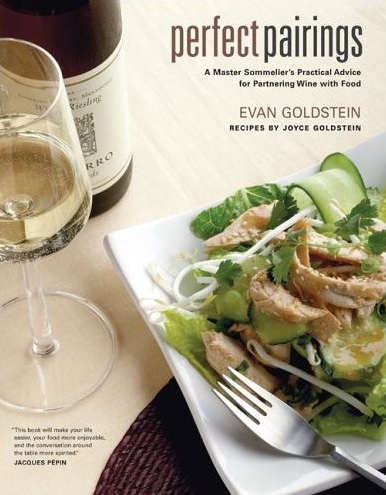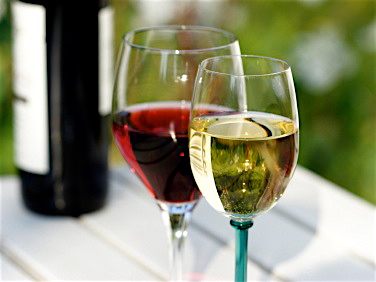
reference-image, l
(article, Otis Rubottom)
[%pageBreakSettings nobreak=true][%adInjectionSettings noInject=true] It’s difficult to know whether to feel excitement or pity for the neophyte wine enthusiast today. On the one hand, there’s never been a better time to discover wine’s myriad joys and mysteries; the array of quality wines, at reasonable prices, from every wine region in the world has made the modern wine market a trove of choices just waiting to be discovered. On the other hand, this same broad swath of options leaves those new to wine (and even those competent but still expanding their experience) with so many choices to consider, so many varietals to keep track of, that it’s no wonder these same people turn to some form of guidebook to help make sense of the vineyard. At the bookstore these intrepid shoppers are met with an equally vast selection of publications, each designed to guide the reader to one particular realm of knowledge. There are wine books that focus on wines by country, such as Andrew Jefford’s stellar [%bookLink code=184000410X "The New France"]. There are books that go by region, such as [%bookLink code=0520212517 "Côte D'Or: A Celebration of the Great Wines of Burgundy"], Clive Coates’ wonderful, if deeply complex, treatment of the world’s most celebrated region. And there are books that rate wines by critical preference, such as Robert M. Parker’s [%bookLink code=0743237714 "The World's Greatest Wine Estates"]. Some of these tomes are intellectual, while others are plainspoken; some are broad, others very specific. There are down-to-earth books, mildly interesting books, and downright captivating books. And that’s not even getting into books about the love of wine, such as Kermit Lynch’s rousing [%bookLink code=0374522669 "Adventures on the Wine Route: A Wine Buyer's Tour of France"], which delves into the inspiration found in a life devoted to wine. How to choose? And what should the ordinary reader expect to be able to take away from, say, a book on wine and food pairings? Plenty, in theory. It’s almost silly to say that pairing food and wine is more art than science; of course it is. Yes, there are some reliable rules of thumb — wines higher in acid generally pair better with food than those with lower acidity; strong oak elements in wines overwhelm delicate dishes — but it’s still helpful to recall that this particular task is as subjective as any other taste. In Perfect Pairings, Evan Goldstein tackles the elusive, alchemical challenge of pairing wine with food. Goldstein certainly has the qualifications to tackle this unwieldy subject. He’s a four-time James Beard Award nominee and has logged stints in such notable venues as the Hotel Lancaster in Paris and Chez Panisse Café in Berkeley, and was only the eighth American (and youngest at the time) to pass the intense, three-day Master Sommelier exam. His book is well written and welcoming; it’s light on wine jargon, casual in tone, and full of much useful information. He’s even included recipes from his mother, Joyce Goldstein, the former co-owner of San Francisco restaurant favorite Square One. [%image promo-image float=left width=400 credit="Photo: iStockphoto/Tschon" caption="Red or white?"] Unfortunately, Goldstein's emphasis on creating a road map to the pairing challenge (science) continually runs up against the inherent subtle and individual proclivities (art) of matching one set of flavors and textures with another. He's hamstrung by his attempts to be at once accessibly simple and appropriately thorough; these conflicting desires ultimately prevent Perfect Pairings from being the truly valuable resource it so desires to be. In an attempt to keep the subject manageable, Goldstein focuses on just 12 varietals, with additional sections on sparkling wine and sweet wines (dessert wines and port). For each section, he lays out a brief history of the grape, notable areas of its production, and its general flavor profiles, before listing pairing do’s and don’ts and a few recipes. The recipes are matched to different grape styles, such as “minty, earthy merlot” or “clean, racy, citrusy pinot gris.” Perhaps this could work for true beginners, still new to some of wine’s terminology. (It could also do them a disservice, reducing the variations to be found in any given varietal to the adjectives that Goldstein assigns.) But even semi-experienced wine drinkers may find this approach confusing, since one person’s fruit-forward viognier is another’s overperfumed disaster. In addition, the omission of certain famous food-friendly varietals — including chenin blanc, gamay noir, and nebbiolo — is notable for its utter lack of sense. Sacrificing some of the world’s most easy-to-pair wines in favor of the most common varietals (and personal picks like viognier) prunes Goldstein’s effort before it’s even had a chance to flower on the vine. In another earnest attempt at clarification, the book opens with a lengthy introduction about wine’s taste and flavor characteristics in general. This could have been helpful, but it gets repeated in so many variations throughout the later sections that, instead of becoming clearer, the opposite is achieved: it’s hard to tell what the guiding principles really are when they keep reappearing, in slightly altered ways, throughout the book. The 30 pages of tables that end the book are worse. Breaking out wine by region, varietal, and appellation, these could be a great way to easily place certain wines and styles for reference. Instead, they’re so stripped down that they’re really nothing more than information snapshots; for truly inquisitive drinkers, they seem certain to raise almost as many questions as they answer. For example, it’s helpful to be able to see that when syrah (category) is referenced in France (region), it appears in the Rhône and its assorted appellations. But nowhere does Goldstein state that most of the wines from those very appellations are blends of syrah and a few other key grapes (grenache and mourvèdre, varietals barely mentioned anywhere else). Sending someone to the wine store in search of “syrah from the Rhône” is sort of like sending them to the market in search of apples from Washington. They’re bound to find some, but the range of possibility is broad. Finally, there are a couple genuinely wrong pieces of information about specific producers (Adelsheim is based in Oregon, not California), which casts doubt on the editing of the entire book. [[block(sidebar). h1.Featured recipes]] To the book’s credit, the recipes that accompany each chapter are well thought-out, and tend towards simple, rich flavors that work well with the suggested wines. Calamari with Garlic and Peas, for example, should pair beautifully with an old-world-style sauvignon blanc, while the Lamb Shish Kebabs, a simple yet flavorful grill option, should have a harmonious, delicious interaction with aged pinot noir. Still, as an overall resource, Perfect Pairings lacks the necessary neat-and-concise organization of information. Nor does it sparkle as a guide to a more intuitive understanding of how wine and food chime or clash. We go to a book like this to make knowledge easier, not harder, to attain. For the tough stuff, we already have the wine aisle at the supermarket. p(bio). Otis Rubottom lives in Portland, Oregon, where he no longer works in the wine industry. He firmly believes that champagne solves all pairing issues.

reference-image, l

featurette-image, l

feature-image, l

promo-image, l